As spring arrives and the days grow longer, many gardeners eagerly anticipate giving their houseplants some fresh air and sunshine. Transitioning indoor plants outdoors can greatly boost their growth and overall health—but only if done carefully. Sudden exposure to direct sunlight, wind, or temperature fluctuations can shock or even damage your plants. Learning the right steps for acclimating your indoor plants will ensure they thrive in their new outdoor environment.
Here’s a detailed guide on how to safely transition your indoor plants to outdoor life in spring so they can enjoy the best of both worlds.
1. Why Move Indoor Plants Outdoors in Spring?
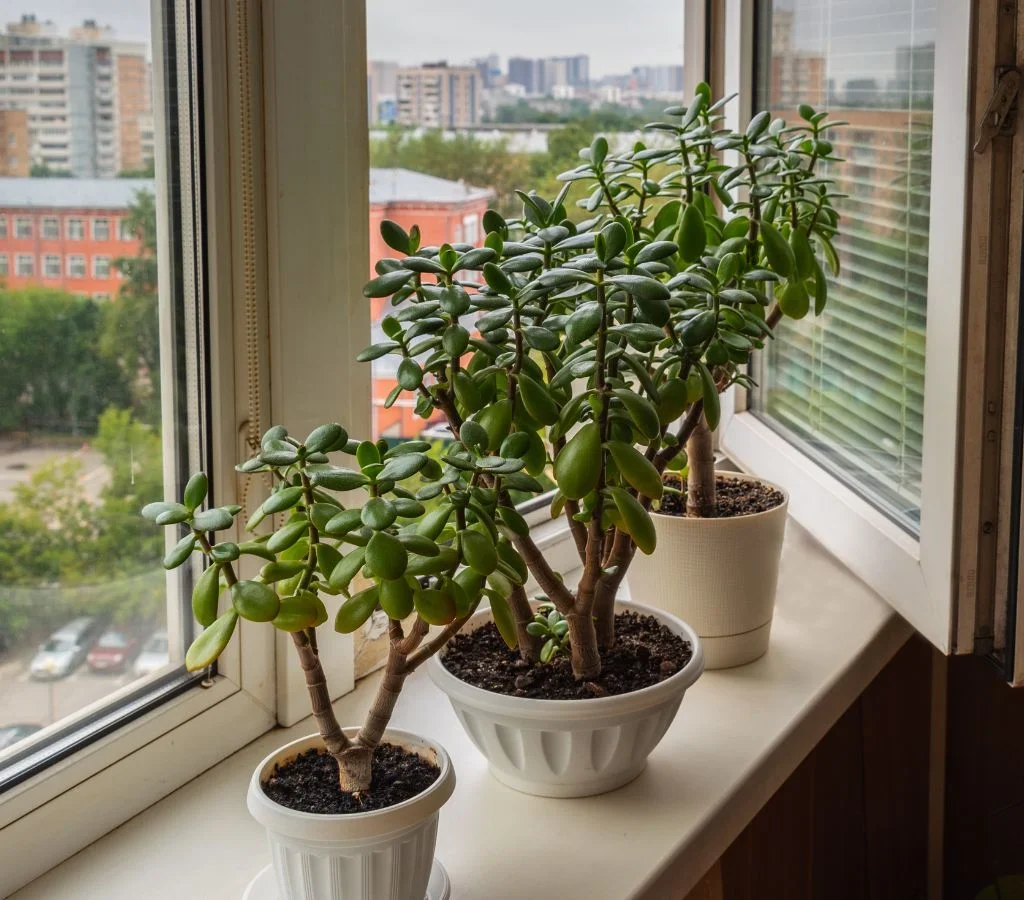
Bringing indoor plants outside offers numerous benefits:
- Increased sunlight: Outdoor light intensity is far greater than indoor lighting, helping plants grow stronger and develop richer colors.
- Better air circulation: Fresh air reduces mold and mildew risks and encourages sturdier stems.
- Pollination and natural feeding: Exposure to pollinators and rainwater introduces nutrients that help plants flourish.
However, these advantages only apply if you gradually acclimate your plants to prevent sunburn, stress, or dehydration.
2. Choose the Right Time to Begin
Timing is everything when it comes to moving plants outdoors.
- Wait until the last frost date has passed. Most houseplants are tropical and can’t handle cold. Check your local frost dates and wait until night temperatures consistently stay above 55°F (13°C).
- Spring is ideal, usually between late March and early May depending on your climate.
- Start on a calm, overcast day to reduce sun stress.
If you rush this process, your plants may suffer shock from sudden temperature or humidity changes.
3. Prepare Your Plants Before the Move
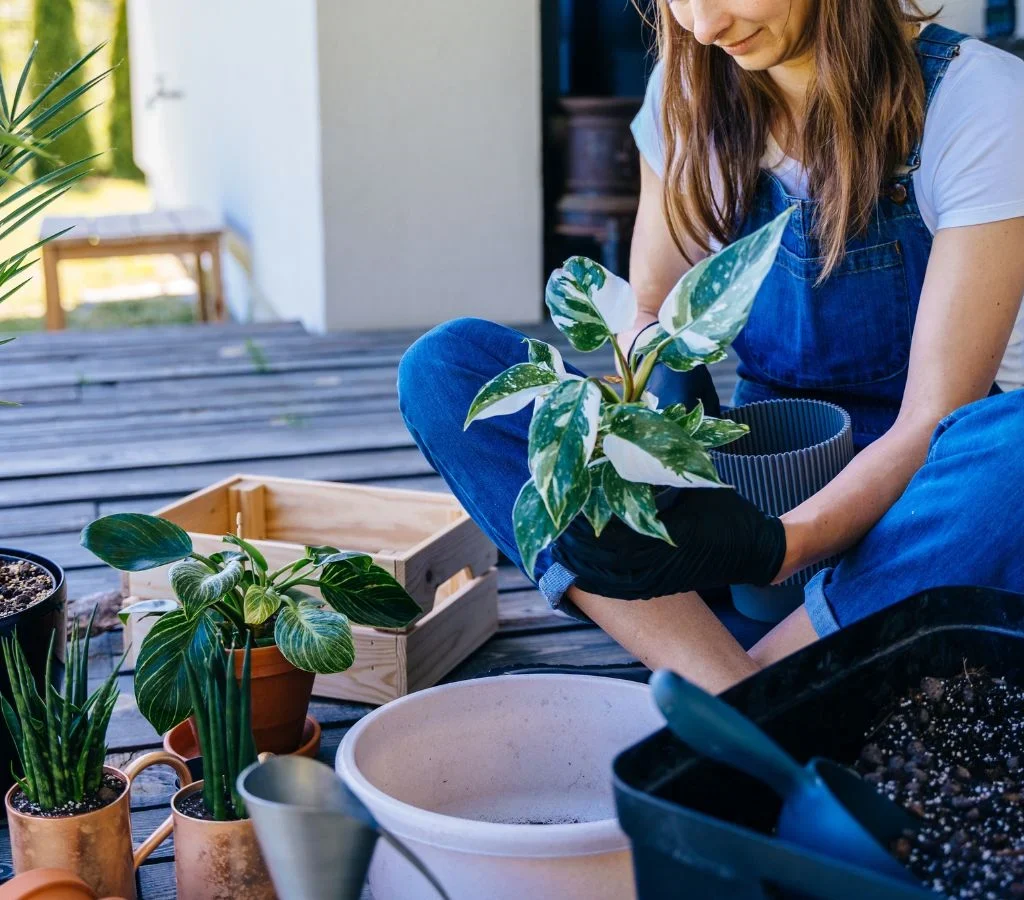
Before you bring your plants outside, take a few steps to ensure they’re ready for the transition:
- Prune and clean: Remove dead or damaged leaves to encourage new growth and prevent pests from hitching a ride.
- Repot if needed: Spring is the perfect time to refresh soil or move plants into slightly larger pots.
- Water thoroughly: Hydrated plants handle stress better, but don’t let them sit in soggy soil.
- Inspect for pests: Check leaves, stems, and soil for insects before taking them outside to avoid infestations.
This prep work ensures your plants start strong and healthy in their outdoor environment.
4. Start Slowly — The Hardening-Off Process
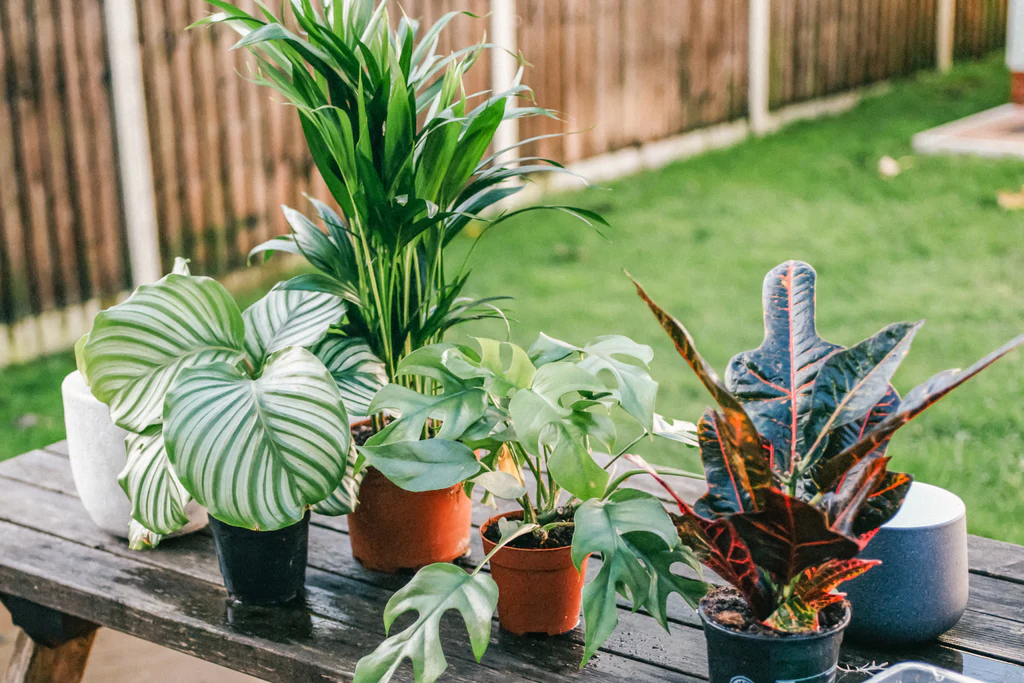
Transitioning plants outdoors requires gradual acclimation, also known as hardening off.
Here’s a simple step-by-step schedule:
Day 1–2: Place plants in a shaded, sheltered area outdoors for 2–3 hours, then bring them back inside.
Day 3–5: Increase exposure to 4–5 hours, still avoiding direct sun.
Day 6–8: Let them stay outside all day in partial sunlight, but bring them indoors at night.
Day 9–10: Leave them outside overnight if temperatures remain above 55°F (13°C).
This gradual exposure helps plants adjust to wind, sunlight, and fluctuating humidity, building their resilience before they stay outdoors full-time.
5. Choose the Perfect Spot Outdoors
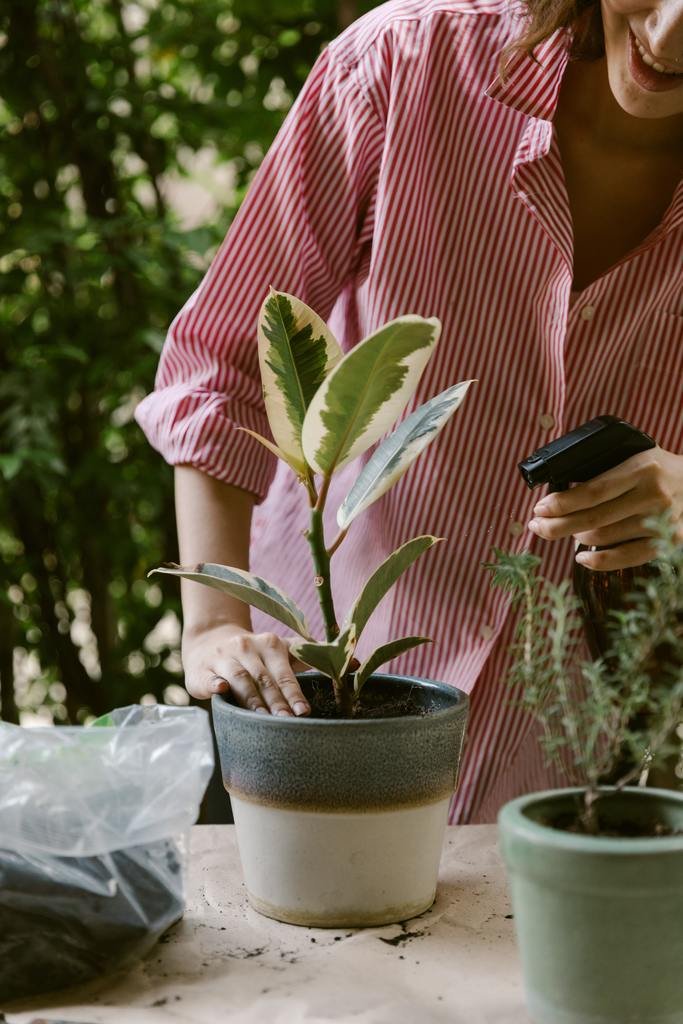
Each plant has its own preferences when it comes to sunlight and humidity.
- Bright, indirect light: Ferns, pothos, philodendrons, and peace lilies thrive under trees, porches, or shaded patios.
- Partial sun: Succulents, geraniums, and herbs love several hours of gentle morning sun.
- Full sun: Cacti, hibiscus, and bougainvillea do best in bright, sunny locations—but introduce them gradually to prevent scorching.
Tip: Avoid placing plants near reflective surfaces (like white walls or glass) where heat can intensify and damage foliage.
6. Protect Against Wind and Pests
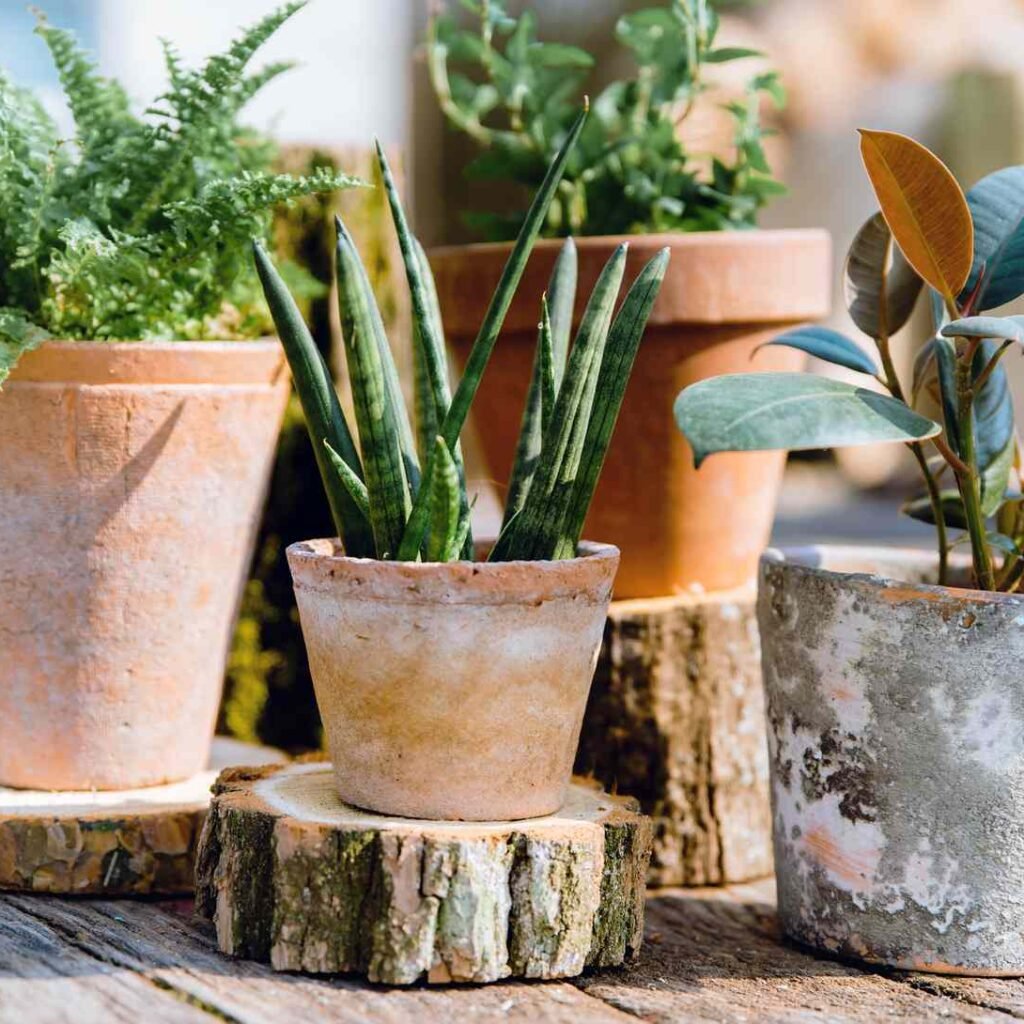
Outdoor exposure means plants must face elements they’re not used to indoors.
- Wind: Use fences, trellises, or garden furniture as windbreaks. Strong gusts can snap delicate stems or tip over pots.
- Pests: Outdoor pests like aphids, spider mites, and snails can find your plants appealing.
- Spray leaves with neem oil or a mild soap-water solution weekly.
- Place sticky traps nearby to monitor infestations.
- Animals: If you have pets or wildlife around, elevate pots or use mesh covers to protect your plants.
7. Adjust Watering and Feeding Habits
Outdoor plants face more variable conditions—sunlight, wind, and rain all affect how quickly soil dries out.
- Check moisture frequently: Wind and heat can dry pots faster than indoor air. Stick your finger 1–2 inches into the soil; water only when it feels dry.
- Morning watering is best: It gives plants time to absorb moisture before the heat of the day.
- Fertilize lightly: Outdoor growth accelerates in sunlight, but overfeeding can burn roots. Use a balanced liquid fertilizer every 2–3 weeks.
Remember that rainwater can help naturally feed your plants, so avoid overwatering after a shower.
8. Watch for Signs of Stress
Even with gradual adjustment, plants might show temporary stress symptoms such as:
- Drooping or curling leaves (from sun exposure or wind)
- Yellowing foliage (from overwatering or shock)
- Leaf burn or bleaching (too much sun, too soon)
If this happens, move the plant back to a shaded spot and reduce outdoor time for a few days. Most will recover quickly once they adapt.
9. Maintain Consistency Once Established
After a week or two of acclimation, your plants should be comfortable outdoors.
To keep them thriving:
- Rotate pots occasionally to ensure even growth.
- Continue pest checks weekly.
- Reapply mulch or topsoil to retain moisture and nutrients.
For climbing or vining plants, provide supports or trellises as they grow.
10. Bringing Them Back Indoors (Later in the Year)
When autumn approaches, reverse the process. Before frost returns:
- Begin bringing plants in for a few hours daily to re-adjust them to indoor conditions.
- Prune and clean before moving them back inside.
- Check thoroughly for bugs or fungus to prevent indoor infestations.
This ensures your plants stay healthy and ready to repeat the cycle next spring.
Final Thoughts
Transitioning indoor plants outdoors in spring is one of the most rewarding gardening routines. With patience, planning, and care, your plants will thrive in natural sunlight and fresh air—rewarding you with vibrant growth, lush foliage, and even blooms you wouldn’t see indoors.
By following a gradual hardening-off process, providing protection, and observing their needs closely, you’ll help your houseplants adapt smoothly to the great outdoors—and return indoors healthier than ever when the seasons change again.
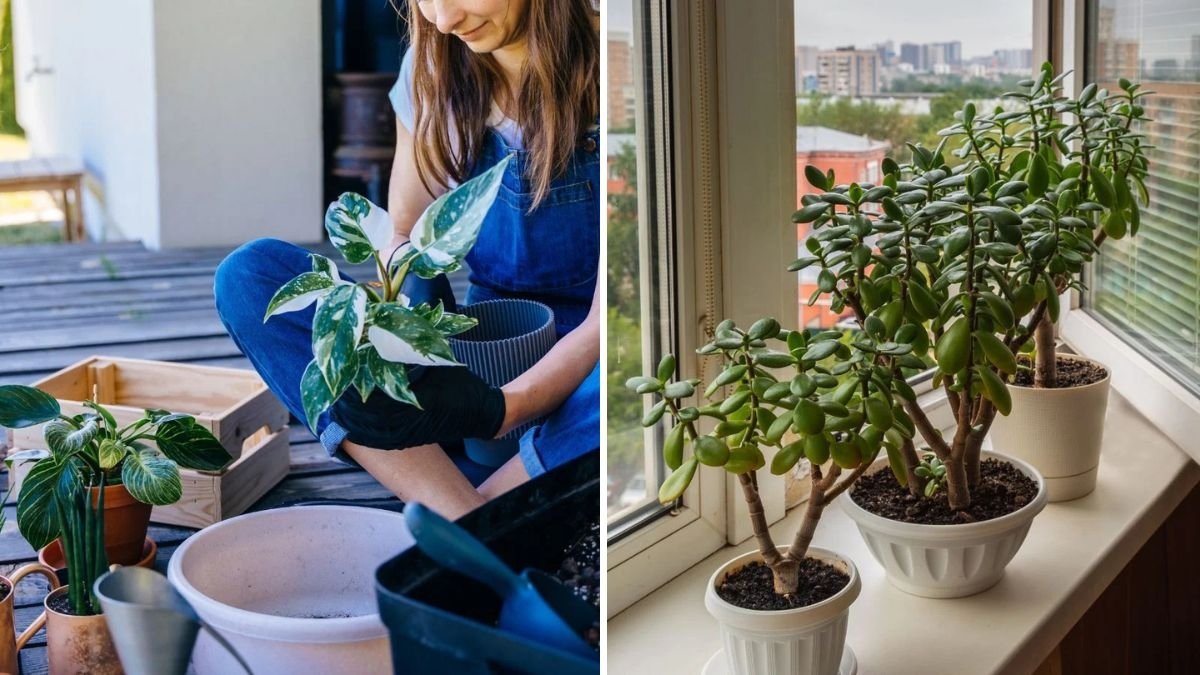




Leave A Comment